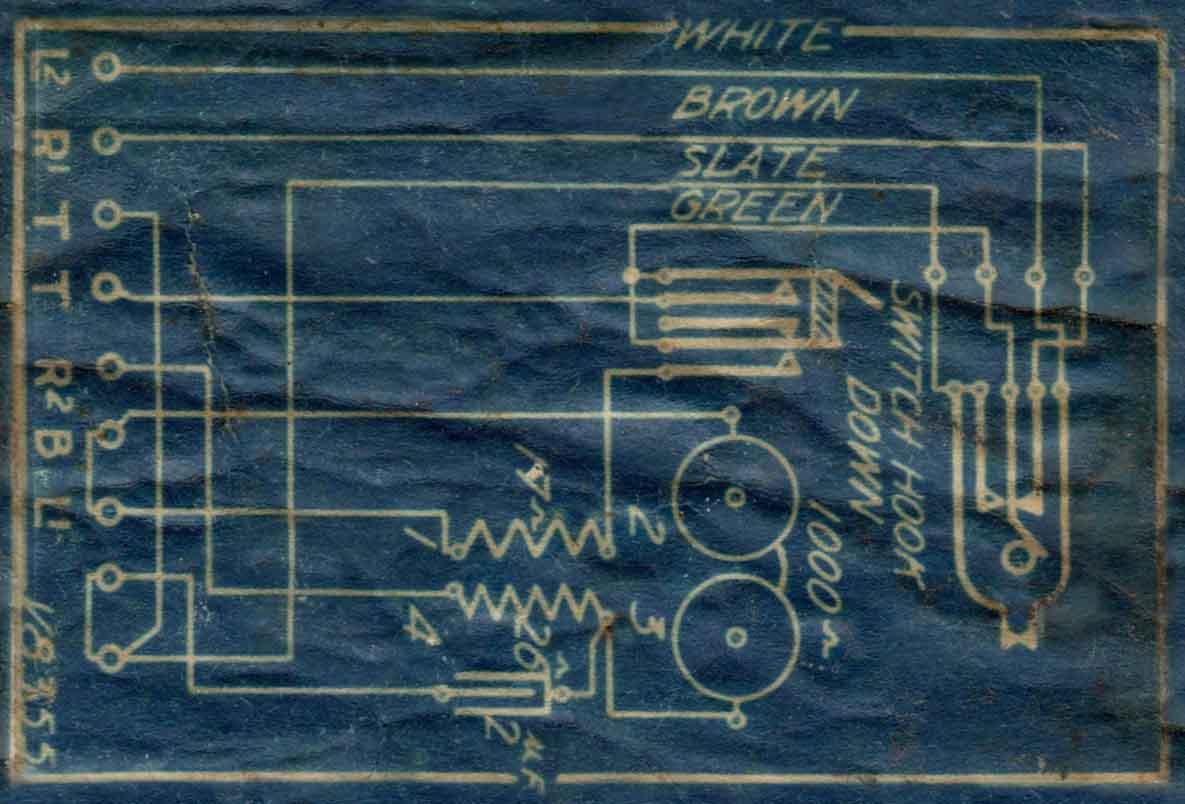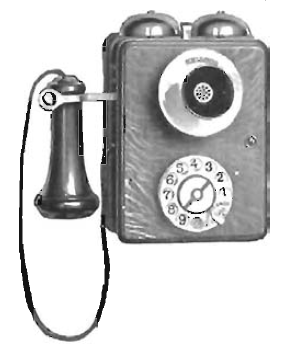Kellogg Residence Set
The PMG Tele No 37 (residence set) replaced the AW1 (Geelong Phone) as the standard PMG wall telephone. It was itself replaced by the Tele 300AW (although some Teles 162 were wall mounted) but remained in service for many years. The Tele No 37AW was based upon the Bellset No 1 with the addition of a transmitter, receiver and dial. They were made in the UK by the likes of Peel Conner, British Ericsson and others. The circuit was based on a US Western Electric booster circuit.
This was not the only residence set that was used in Australia; a wooden residence set made by Kellogg was used by the PMG in the 1920s, presumably, when there was a shortage of British telephones in the post WW1 period. The Kellogg residence set is the subject of this article.
Although they don’t come up very often, this Kellogg residence set sold on eBay in July 2016 for $260.55 after just five bids.
.jpg)
Although normally fitted with a Kellogg dial, this telephone is fitted with a Siemens Brothers No 3 dial which, as can be seen from the inside view, is not connected. It is also clear that this telephone has been upgraded to use a five point dial. The fifth (hinge side) dial terminal has been added and a wire has been added to the loom between the door and the cabinet.
.jpg)
As there is an induction coil, this telephone is equivalent to a Tele No 37 which used a booster circuit and not the Automatic Electric AW1 which used a series circuit. Kellogg did make a series version of its residence set (Code 779) but the author has not seen one that was used by the PMG.
.jpg)

Unlike the AW1 (Geelong Phone) and the Australian (often Peel Conner) Tele No 37, The Kellogg residence set was only available for a short period. The “Kellogg Automatic Dial”, Kellogg’s second dial, was released in early 1922 and the wooden residence set appeared in Kellogg’s General Catalogue No 6 in 1923. The residence set did not appear in Kellogg’s Calalogue No 7 in 1926 so, at most, it was available from 1922 to 1925 – four years.
Here is an excerpt from catalogue No 6 describing the Kellogg’s residence set.
Oak Residence Type
The oak residence automatic telephone is of the same standard construction as our oak residence set except that the transmitter is mounted in the upper part of the cover to make room for the dial. The receiver shell and mouthpiece are of Kellogg Bakelite. The gongs are of brass heavily enamelled. The finish is our standard oak.

| Code | Ind Coil | Cond | Rec |
|---|---|---|---|
| 779 | - | 12 | 36A |
| 780 | 79A | 16 |
41A |
Both models share a ringer 79A, arm 41 and hook switch 133.
Model 780 used a booster circuit which included an induction coil. Model 779 used a series circuit, no induction coil and an electromagnetic (no permanent magnet) receiver just as the AW1 (Geelong Phone) did.
The model used in Australia was apparently the 784HA. This is based upon the model 780 but has nickel highlights and a dial number plate with Australian letters.
Here is an excerpt from catalogue No 6 describing the Kellogg’s automatic dial.
.jpg)
The outstanding feature of the Kellogg Automatic is that it is a piece of mechanism that can be taken apart and put together easily by any one. This is of paramount importance to exchange managers who have had to carry the expense of highly salaried mechanics.
In reality, the Kellogg dial is quite similar to the Automatic Electric Mercedes dial. The main differences are the governor and the operation of the pulse springs. The main shaft is fixed to the finger wheel like the Mercedes dial and it has an Automatic Electric mount like the Mercedes dial.
Credits
Catalogue No 6 - General Catalogue, Kellogg Switchboard and Supply Company, 1923
Catalogue No 7 - Apparatus And Supplies, Kellogg Switchboard and Supply Company, 1926
Auction Images, eBay
Additional photography, Jack Ryan
The Kellogg catalogues are available on Kellogg Mike's WEB site